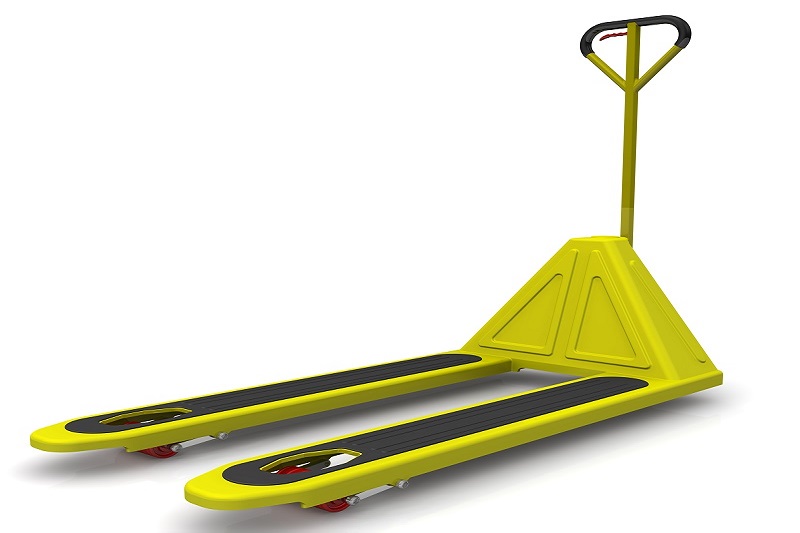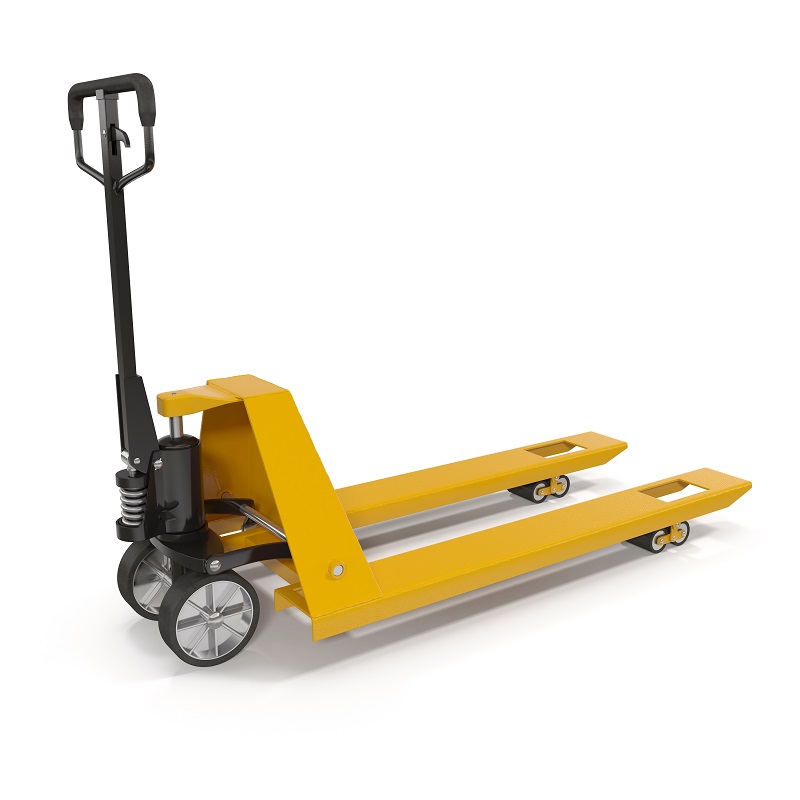Everything You Need to Know About Pallet Jack

The device which is used for lifting and raising pallets is known as pallet jack or jigger. They are the fundamental type of a forklift that can help in the movement of warehouse pallets.
The Basic principle of operation of pallet jacks
- The pallet jack is operated by a lever which looks like a tiller that helps in lifting the jack.
- A hydraulic fluid is given out by the small handle of the lever which helps in the lowering of the forks.
- The forks have front wheels which are joined to linkages that are in turn joined to the jack cylinders
- On lifting the hydraulic jack, the wheels are forced down which causes the forks to rise above the front wheels and aids in lifting the load above.
- The pallet is not raised much, it is raised only to a level that it can clear the floor for the next travel
- In case the forklift truck is not available, a pallet jack is used in the organization of pallets inside a trailer.
- In the front, a jack is equipped with steering wheels, while an individual fork is equipped with a single wheel or two bogie wheels.
First appearance of Pallet Jacks
Pallet jacks have existed from as early as 1918, the only difference between early pallet jacks and modern ones is that the older ones raised load by means of mechanical linkages whereas the newer ones make use of hydraulic jacks to lift loads.
Types of pallet jacks
A pallet jack is of two types:
- Manual Pallet Jack and
- Powered pallet jack.
- Manual Pallet Jack: These types of jacks are hand-operated which are mostly used in retail and warehouse operations.
- Powered Pallet Jack: Such jacks are driven by motors to lift heavy weight and stacked pallets. A person who is appointed to move these pallets has a platform to stand while he is engaged in his operation. A force is applied on the handle to move powered pallet jack in forward or reverse motion and is operated by moving the handle in desired direction. Instead of a brake to stop the machine, some pallet jacks contain a dead man’s switch as they help to stop the machine instantly without any delay, unlike, that of a brake and can be used conveniently in emergencies. A plugging system is also used in some kinds of pallet jacks when driver turns the force from forward to backward direction or vice versa to stop the machine.

Problems with operation
- In such operations, reverse pallets cannot be used conveniently.
- The non-reversible pallets cannot possess deck-boards in which front walls can go up to till the floor.
- The forks cannot be introduced inside the notches thus, they allow only a two-way entry into a four-way notched stringer pallet.
Advantages of pallet jacks
Some advantages of pallet jacks are discussed below:
- They allow easy transportation of all kinds of goods, heavy or light, from one location to the other.
- They can easily store the goods conveniently one over the other without making them look clumsy
- They make proper use of the space of the warehouse and help in the proper arrangement of goods.
Pallet jacks are widely used in manufacturing industries, retail and other specialty stores especially on floors of factories and warehouses. They have become essential tools in major factory and warehouse operations and without them, storing and movement of goods have become nearly impossible.